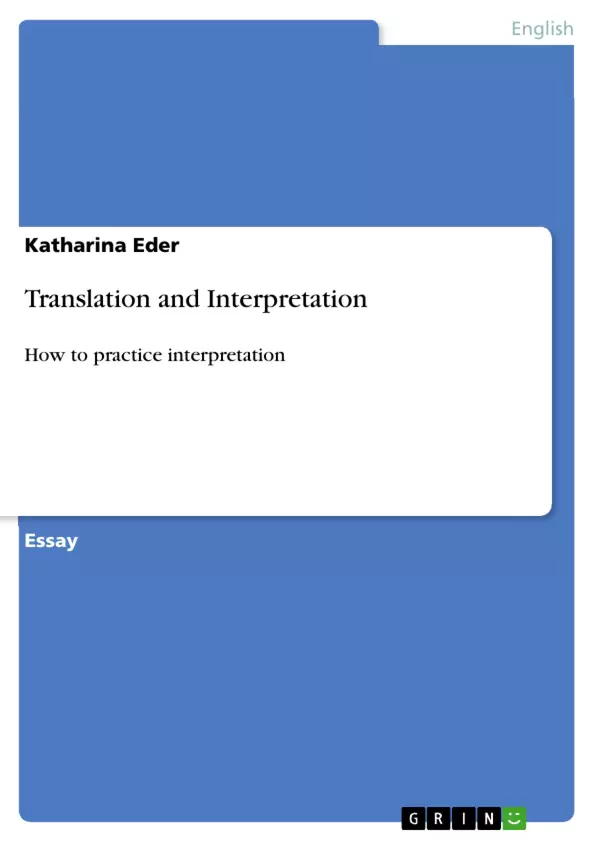Interpretation is of two types: simultaneous and consecutive. The term ‘simultaneous interpretation’ is self-explanatory. In it, the interpreter speaks simultaneously, translating to the target language while listening to the original message in the source language. In consecutive interpretation, the interpreter listens to chunks of the message in the original language and interprets at intervals. For this, the interpreter may either take notes (in notations or short forms) so that long passages may be interpreted accurately, or may rely on memory to interpret shorter messages.
Inhaltsverzeichnis (Table of Contents)
- Interpretation is of two types: simultaneous and consecutive
- Consecutive Interpretation
- Advantages of consecutive interpretation
- Disadvantages of simultaneous interpretation
- How to practice interpretation
- The basics
- Material used should be appropriate for the stage of the course and for interpretation purposes
- Practise in groups of 2-4 for consecutive, 3-6 for simultaneous
- Always practice with a specific aim
- Analyse problems encountered and how you dealt with them
- Interpret - take comments - interpret again
- Remind yourself of technique issues
- Keep a logbook in which to note comments made about your interpreting performances
- Keep a logbook in which to note ways of interpreting certain common expressions and ideas
- Record everything and listen to at least some of your own output - correct it! Buy a dictaphone!
Zielsetzung und Themenschwerpunkte (Objectives and Key Themes)
This essay explores the differences between simultaneous and consecutive interpretation, outlining the advantages and disadvantages of each method. It also provides a comprehensive guide to practicing interpretation, focusing on various techniques and strategies for improvement.
- The differences between simultaneous and consecutive interpretation
- The advantages and disadvantages of each method
- Practical applications of each method
- Effective techniques for practicing interpretation
- The importance of feedback and self-reflection in interpretation practice
Zusammenfassung der Kapitel (Chapter Summaries)
The first section introduces the two main types of interpretation: simultaneous and consecutive. It explains the process of each method and highlights their unique characteristics. The second section focuses on consecutive interpretation, exploring its advantages over simultaneous interpretation, including cost-effectiveness, flexibility, and the ability to adapt to context. The essay then delves into practical strategies for practicing interpretation, outlining a comprehensive approach that encompasses various aspects of technique, material selection, and self-evaluation.
Schlüsselwörter (Keywords)
This essay focuses on the techniques and practice of interpretation, examining both simultaneous and consecutive methods. Key themes include the advantages and disadvantages of each type, the importance of practicing with specific aims, the role of feedback and self-reflection, and the use of various techniques to improve fluency, intonation, and content accuracy.
- Quote paper
- Katharina Eder (Author), 2008, Translation and Interpretation, Munich, GRIN Verlag, https://www.hausarbeiten.de/document/172593


